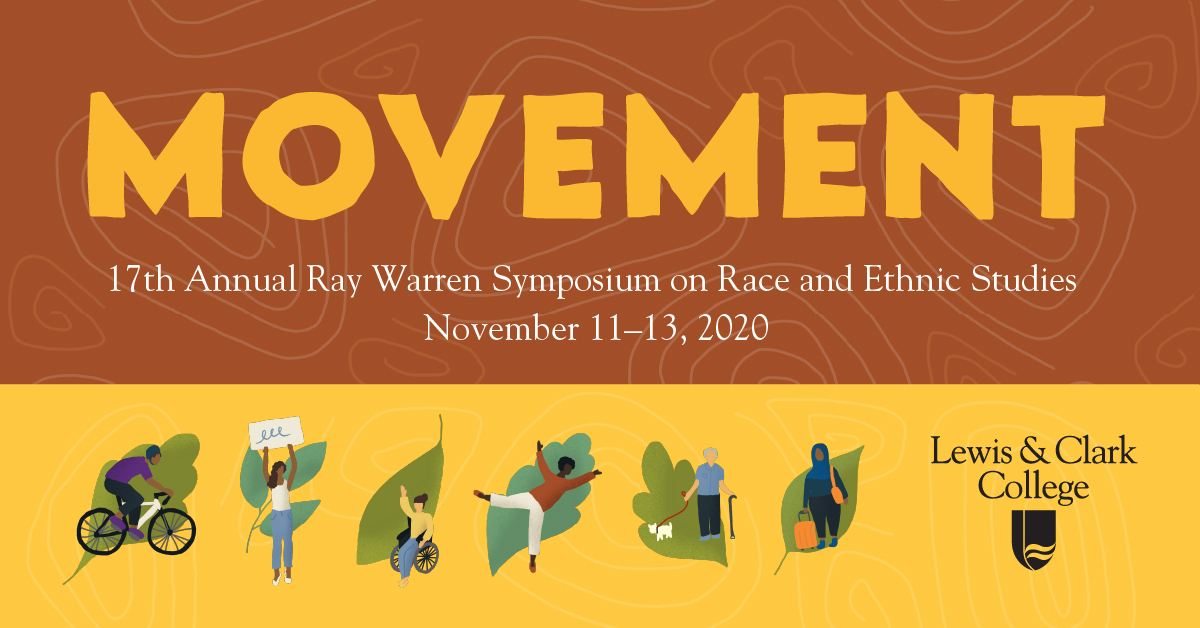
The 17th annual Ray Warren Symposium (RWS) on Race and Ethnic Studies was held from Nov. 11 to Nov. 13 on the theme of “movement.”
This year’s RWS was organized by co-chairs Eduardo Beltran ’22, Katarzyna Enriquez ’21, Immanuel Harice ’22, Shalini Hanstad ’22, Samantha Hernandez ’21 and faculty director Kimberley Brodkin, associate professor with term of humanities. The theme focused on unveiling how central movement is to the embodied experiences of Black, Indigenous communities and communities of color. The symposium kicked off with Afro-Caribbean composer, performer and writer JJJJJerome Ellis’s keynote titled “the stutter has run away from any government —.” In his presentation, Ellis spoke on the generative and creative possibilities of disfluency, blackness and art that also make them subversive and anti-capitalist.
In past years, RWS events have been in-person and spanned over three days. However, symposium events this year were exclusively online due to the pandemic. Enriquez, one of the symposium co-chairs, elaborated on her unique position as RWS looked very different this year.
“Organizing a virtual symposium has been a complex experience,” Enriquez said via email. “The biggest benefit is that we’ve been able to expand our reach toward getting panelists and speakers around the U.S., and not just people who are located in the (Pacific Northwest).”
The online format did make events more accessible as audiences could tune in from the comfort of their homes and captioning services were also provided at all events. Community members could pre-register for workshops and find Zoom links for day-time panels on the symposium website go.lclark.edu/rwsymp.
However, a fully online format also presented challenges. Enriquez spoke about the impact this had on the symposium experience of student participants as well as co-chairs. For instance, co-chairs usually develop strong bonds through this process, but they were not all able to work with each other in person this year.
“I feel like being in person with people is an intimate experience, especially for students of color, and I’m nervous about fostering a space like RWS has been in the past,” Enriquez said.
For Race Monologues, which has been known to fill the college’s chapel to capacity, each presenter recorded a video of their monologue. They are being released on Friday evening and can be viewed over the weekend by pre-registering online. Pamela Nassar Altabcharani ’21, who is participating in Race Monologues and moderated “Race Across Disciplinary Boundaries: Student Research Presentations,” highlighted the value of a collective and creative process for crafting a monologue.
“What I find really beautiful and valuable about presenting my monologue is that the words I use are very intentional, about what it means to be here as a non-permanent resident and specifically as a woman of color,” Altabcharani said. “(Having) no expectation for me to create a cohesive paragraph or explain myself in long sentences has really worked for me. Trying out a rap format has been cathartic and the whole process itself, especially working with other students who are doing race monologues. For us to all be together and agree to be vulnerable around each other has been really powerful and bonding us more than I thought it would.”
In lieu of a Healing Justice Practice Space, this year’s symposium saw a relaxing and empowering workshop on “Caring for Ourselves in Times of Change” facilitated by transformational consultant and visionary healer Amadeo Cruz Guiao on Thursday morning. Guiao’s intercultural approach to facilitating the workshop emphasized interconnectedness, as informed by their experiences as a “queer, gender-nonbinary, decolonizing Filipin@ American child of immigrants,” as their biography states.
Later that day, anthropologist Jason De León delivered the second keynote talk titled “Understanding the Politics of Migrant Life and Death along the US/Mexico Border.” The talk was an intimate conversation with De León, whose work highlights the decomposition of migrants’ bodies as a result of the U.S. government’s strategy to direct migrants toward harsh desert terrain. This strategy has been in place since the mid 1990s to “deter” immigrants from entering the United States. De Leon’s work encouraged participants to reflect on how State practices cause many immigrants to die while on this journey.
Professors encouraged students in their classes to attend keynotes and panels of interest. While the Ray Warren Symposium community may have gathered in different ways this year, these events honored Ray Warren’s legacy by celebrating the excellence, creativity, and kinship of underrepresented communities.
Arunima Jamwal ’21 is a former co-chair of the Ray Warren Symposium on Race and Ethnic Studies.
Subscribe to the Mossy Log Newsletter
Stay up to date with the goings-on at Lewis & Clark! Get the top stories or your favorite section delivered to your inbox whenever we release a new issue.

Leave a Reply